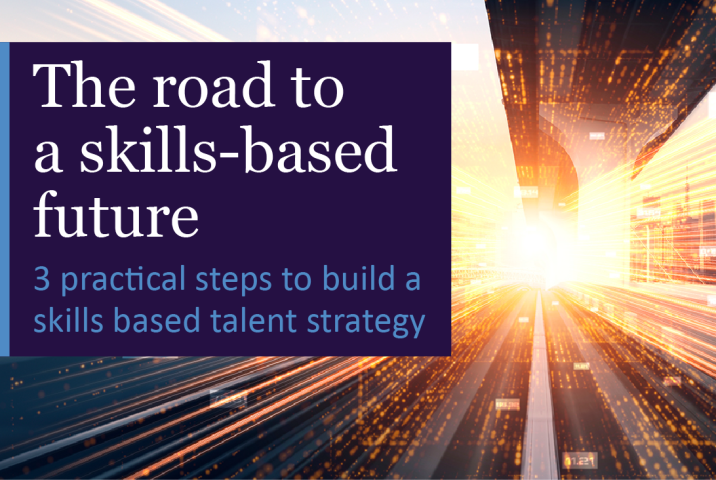21 July 2021 — As Covid restrictions continue to ease there’s a general optimism that some sense of normality is on the horizon. We’re already seeing recruitment confidence pick up, with recent research from the Association of Professional Staffing Companies (APSCo) showing that permanent vacancies in the UK were up 90 per cent year-on-year in April. Contract roles reported a similar spike, up 83 per cent between April 2020 and 2021.
However, while this uptick in hiring may seem positive on the surface, below the water there’s a potential skills shortage looming that is worrying HR and management teams as organisations plan for post-pandemic growth.
In fact, in a recent survey of global talent acquisition managers and HR Directors, we found that 42 per cent are facing a hiring surge at the moment, with the need to reduce time to fill and improve efficiency in the hiring process also flagged as top of the agenda for talent teams.
The challenges with this are two-fold. In the first instance, a number of these teams are attempting to support this sudden uptick in recruitment with limited internal hiring resources themselves. Of those we surveyed, 40 per cent indicated they had faced lay-offs in their talent acquisition teams in the last year, meaning that many are now trying to do more, with less resources. (To learn more, read our Guide to Recruitment Process Outsourcing)
Secondly, for skills that have long been in short supply, an increased demand for talent is certainly not a good thing – it simply means that competition for resources is continuing to outstrip supply. This is certainly the case for many STEM-based job roles where the gap between supply and demand has been stretching for several years. The pandemic has arguably done little to help alleviate this problem. In fact, it has exacerbated it. Having gone through a significant period of uncertainty, fewer individuals are comfortable leaving the safety of their current employment, which will have a knock-on effect for job-seeking numbers in the immediate future.
So, how can HR and talent acquisition teams address the skills challenges in a post-pandemic world?
A focus on reskilling
The answer – or at least, part of the solution – lies in reskilling. The last year has drastically changed the resources that many organisations need. We’ve seen businesses shift into new markets and geographies as the need arose. While that has created a need for new skills, it’s also led to unfortunate job losses in some areas where demand stalled. It’s likely that we’ll see peaks and troughs of this trend, particularly when the furlough scheme begins to wind down.
But why lose talent when they have the potential to be reskilled – particularly where the business is struggling to source specific attributes in other areas? Indeed, I’d argue that the most sustainable and cost-efficient approach for modern talent acquisition strategies is to incorporate reskilling into any plans. But action does need to be taken on this matter swiftly, before employees become disengaged with the business or skills gaps impact business as usual operations. Unfortunately, it’s likely that over the course of the pandemic organisations have already lost high-potential talent where reskilling hadn’t been factored in to resourcing decisions. But it’s not too late to prevent the loss of highly engaged talent and improve the skills imbalance.
It’s also important to highlight that skilling helps create equity. This method of developing new attributes allows employers to discover hidden talent and provide a more equal playing field for talent pools – no matter what their prior experience. With equity, diversity and inclusion high on the talent agenda, reskilling should certainly be a significant consideration.
Making reskilling work
While any approach to growing your own skills internally will need to be tailored to your unique business needs and the skills available or in demand, there are a number of best-practice steps that should be followed:
- Integrate skilling into talent acquisition plans: this shouldn’t be a standalone skills strategy. Reskilling needs to be integrated into current and future talent acquisition plans and aligned with development programmes in order to truly work. Treating reskilling as a siloed activity will limit its success.
- Have the data systems in place: This trend of growing your own skills is only going to increase. Now is the time to ensure you have the data collection and tracking in place to effectively measure internal skills and map where there are not only gaps that need filling, but also positions that may soon become redundant.
- Gain active and visible sponsorship from the top: Change is driven from the top down and it’s important to have the buy-in from the executive team that is openly communicated. Active and visible sponsorship of reskilling and the benefits it brings to the business and its people will be crucial to the successdul implementation of this approach.
- Involve all business stakeholders: Re-skilling isn’t an activity that should be managed by a segregated team – whether that’s HR, talent acquisition or line management. Each of these divisions should be involved in the planning stages as each will have a role to play in identifying where skills need to be developed, highlighting where there may be the resources to develop in line with this demand and ultimately ensuring that the reskilling activites are fit for purpose.
- Agree a review process: As with any talent acquisition strategy, it’s important to agree metrics to measure the success of any skilling programme up front. Dexterity will be key to making re-skilling work across your organisation, but without the metrics to track what is working well and what may require improvement, it will be almost impossible to adapt and react in a timely manner.
It’s impossible to predict what the future will hold – the last 18 months have certainly shown us that. But we do know that creating a workforce that’s built for change will give businesses the best possible competitive advantage, no matter what the future holds. Achieving this requires a mix of flexible workforce solutions that includes reskilling as a key strand of talent acquisition.
Originally published 18 June 2021 in HR Review
More articles
Building a Robust AI Governance Capability at AMS
AMS builds a robust AI governance framework, focusing on ethics, compliance, risk management, and training, ensuring responsible AI development and deployment. is and explore its benefits, from flexibility and cost savings to access to specialized skills.
AMS launches Ethical AI in Talent Board
AMS launches Ethical AI in Talent Board to ensure fair, unbiased AI use in recruitment. Experts will guide ethical AI adoption across the talent lifecycle.
The road to a skills-based future
Learn how to reframe talent for the future. Don’t miss the opportunity to unlock organizational potential and meet tomorrow’s challenges, starting now.




























